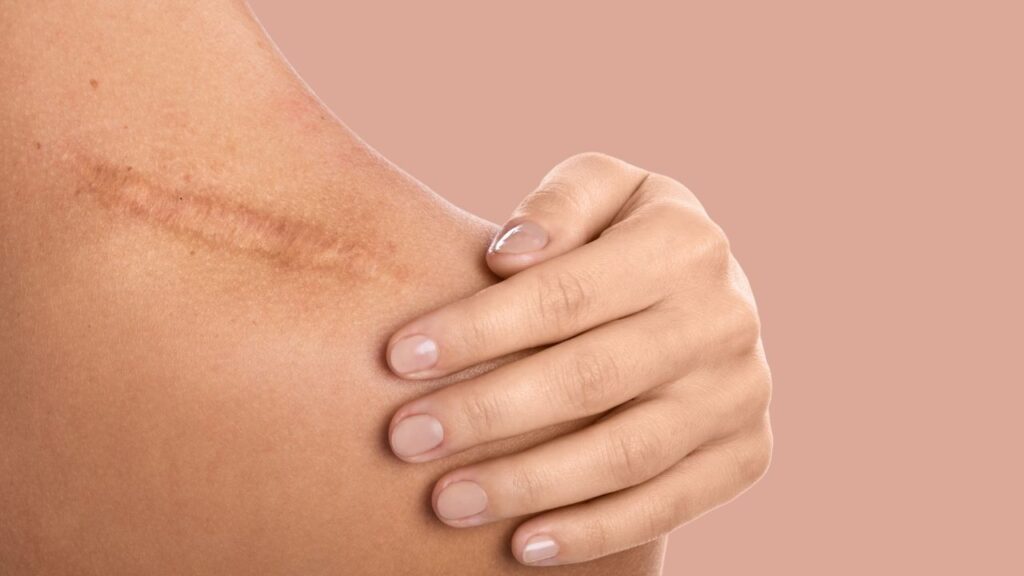Table of Contents
Overview
Whiteheads on the nose are acne that appears as tiny white bumps on the skin and can cause unsightly and unwelcome breakouts on the skin. Even if they don’t leave too many visible scars or blemishes, they can still detract from your appearance and undermine your sense of self-worth.
The good news is that there are several methods with which you can get rid of them.
Keep reading the blog to know more about the cure of whiteheads.
What Are Whiteheads On Nose?
The most tenacious kind of acne, whiteheads, develop when pores get blocked. The nose is located in the T-zone (the oily area of the face that comprises the nose, forehead, and chin), making it more prone to whiteheads due to its oily composition.
In addition, sebum, grime, and dead skin cells may all contribute to the formation of whiteheads in pores. As a result, the blocked pore hardens, resulting in little white lumps on the skin’s surface.
Blackheads and Whiteheads on Nose
Compared to whiteheads, blackheads on the nose tend to be more deeply seated. The open pores are clogged with oil or debris, known as comedones. When the debris in the pore is exposed to air, it oxidizes and hardens the sebum/dirt.
When sebum hardens and combines with melanin (the pigment in the skin), it becomes black. So this is how a blackhead develops. Compared to whiteheads, blackheads linger far longer and are more difficult to get rid of.
Whiteheads on the nose result when a thin layer of skin partially obscures the pore. Dirt and sebum have gathered behind this thin layer, which frequently results in a clog. Whiteheads are a plug that appears on the skin’s surface but does not last as long as blackheads. Do remember, whiteheads are not the cause of inflammation.
What Causes Whiteheads on Nose?
You’ll often find both dead skin cells and oil in your pores, which is very normal. Dead skin cells are a normal part of the body’s renewal process. Likewise, your pores produce oil (sebum), moisturizing your skin.
Whiteheads may form in your pores if you have too many dead skin cells and oil.
The following things may also cause whiteheads:
- Anxiety
- Under a great deal of pressure
- Acne runs in the family.
- Menopause
- Menstruation
- Puberty
- Excessive dryness of the skin (usually from using too many acne products)
- Using skincare and cosmetic products with oil as an active ingredient
How to Get Rid Of Whiteheads on Nose?
To get rid of whiteheads on the nose, dermatologists propose the following methods:
- Retinoids
Vitamin A, a powerful exfoliant, is included in several products. It removes dead skin cells and regulates the production of sebum. Other forms of acne can’t emerge because of the retinoid’s ability to unclog pores.
- Salicylic Acid
It aids in sebum reduction and bacterial infection eradication. If you’re looking for a face cleanser or cream, salicylic acid is an excellent choice.
- Glycolic Acid
A particular alpha hydroxy acid assists in the removal of the epidermis. This method helps clear out the blockages and extra oil that cause whiteheads.
- Benzoyl Peroxide
Whiteheads may also be removed using this method. Benzoyl Peroxide can open pores and remove any debris or sebum trapped within. It destroys infection-causing germs and, as a result, aids in pore cleaning. This product may help prevent whiteheads from appearing on the nose.
How to Prevent Whiteheads on Nose?
You can prevent Whiteheads on the nose by taking the following steps:
- Washing your skin, especially your face, with gentle soap and warm water two times a day.
- Removing your makeup and cleansing your face after you’ve been sweating a lot.
- Avoiding the urge to scrub your skin.
- Using oil-free cosmetics, moisturizer, and sunscreen.
- Using only non-comedogenic products on the face.
- Keeping hands, caps, and hair away from the face and hairline.
- Avoiding picking at pimples or whiteheads.
- Lowering stress levels.
Must Watch – Blackheads & Whiteheads: The Most Important Causes And Its Prevention
What OTC treatments are there?
Benzoyl peroxide and salicylic acid are active chemicals found in many over-the-counter (OTC) whiteheads treatments.
Antibacterial and exfoliating properties of benzoyl peroxide make it an excellent choice for pore cleaning. In addition, acne scars may be reduced by using this product regularly.
On the other hand, salicylic acid may help clear clogged pores on the face and even prevent the development of whiteheads.
Sulfur and alpha hydroxy acids are also active constituents in over-the-counter acne treatments. These aid in removing dead skin cells from the pores and reducing edema on the skin. An additional benefit of using sulfur is that it helps regulate oil production on the skin.
OTC items include:
- Creams
- Gels
- Face washes
- Spot treatments
Even if acne spots have disappeared, it is essential to continue using over-the-counter acne remedies, as there may be an outbreak of new germs after removing them completely.
Conclusion
Many over-the-counter acne treatments, including wash, cream, and gel, are available. However, you should consult an expert dermatologist as prescription medications may be required in certain circumstances.
If you want to get rid of whiteheads permanently, consult our experts now and get the right medical advice.





